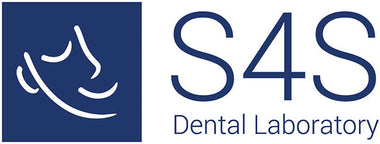BRUXISM AWARENESS WEEK: WHAT YOU NEED TO KNOW ABOUT BRUXISM
Commonly referred to as teeth grinding and jaw clenching, bruxism is a condition that affects millions of UK adults at some point in their lives.
Bruxism Awareness Week, which spans from 21st-27th October, is the perfect opportunity to bring attention to this common, yet frequently under-recognised condition.
We’re here to provide a comprehensive look at bruxism—a condition that can have serious effects on both oral health and overall well-being. With the key information surrounding bruxism condensed into one guide, you can understand the signs, causes, and treatment options available for bruxism.
What is bruxism?
Bruxism is the involuntary grinding or clenching of the teeth. This usually happens while asleep, though it can also occur during waking hours.
Unlike many dental conditions that are easily visible, bruxism’s effects are subtle and build over time, making early recognition essential.
This typically unconscious grinding can lead to significant dental damage, including worn-down teeth, chipped enamel, and even tooth fractures. People with bruxism may also experience frequent headaches, jaw pain, or stiffness upon waking.
What causes bruxism?
There’s no single cause of bruxism, but stress and anxiety are among the most common triggers. Other factors include misaligned teeth, an abnormal bite, and sleep disorders, such as snoring and sleep apnoea.
Lifestyle choices, including excessive caffeine and alcohol consumption, can also increase the likelihood of bruxism.
The importance of bruxism diagnosis
Recognising and treating bruxism early is crucial in preventing long-term damage to your teeth and jaw. The constant pressure and friction from grinding can wear down the enamel, making teeth more susceptible to cavities and sensitivity.
The jaw muscles also take a beating from constant clenching, leading to discomfort, stiffness, and sometimes pain radiating to the ears or head. This can trigger frequent headaches, particularly in the morning. In severe cases, bruxism can also lead to temporomandibular joint disorder (TMD), a painful condition that affects the jaw joint and can make chewing or speaking difficult.
Treatment options for bruxism
There are a variety of treatments available to help manage bruxism and its effects. For those whose bruxism is stress-related, relaxation techniques, such as mindfulness or cognitive behavioural therapy (CBT), can help manage the root cause. In some cases, Botox injections are used to relax the jaw muscles.
However, one of the most effective solutions for managing bruxism, particularly for habitual bruxers, is the use of an occlusal splint, such as the Sleep Clench Inhibitor (SCi).
What is the SCi?
The SCi is designed to reduce the forces generated by the jaw muscles during clenching and grinding, helping to protect teeth and relieve symptoms such as jaw pain. This protective device is most often worn while sleeping, acting as a barrier to prevent grinding. Made bespoke to each patient with a soft inner lining, the SCi provides optimum comfort, making it the ideal solution for bruxism.
Protect your health
This Bruxism Awareness Week, take the opportunity to evaluate your oral health and consider whether bruxism might be impacting you.
If you’re experiencing any of the symptoms of bruxism, even mildly, it’s important to seek a professional opinion. Find your nearest SCi provider today and take the first step toward protecting your teeth from further damage.
